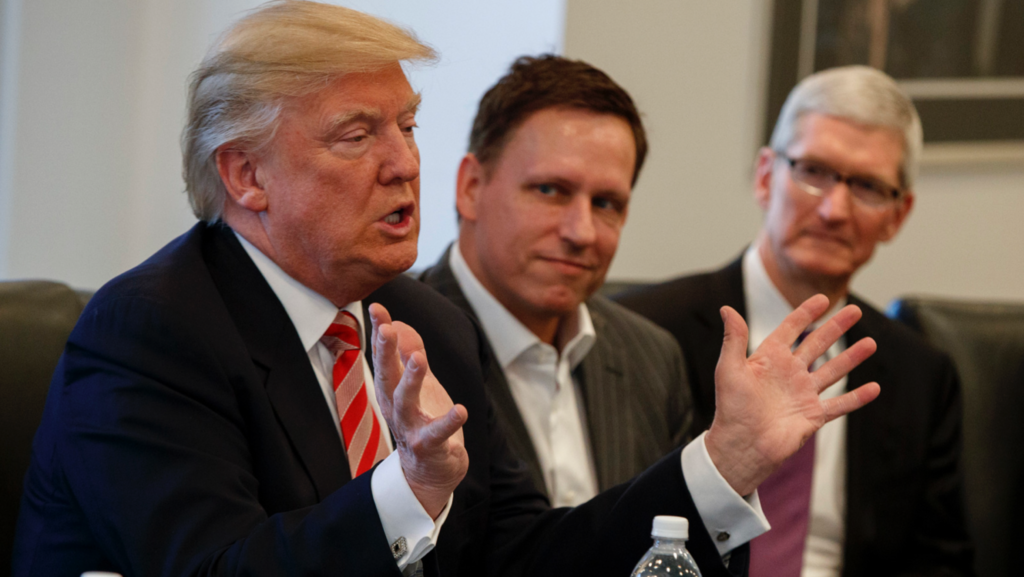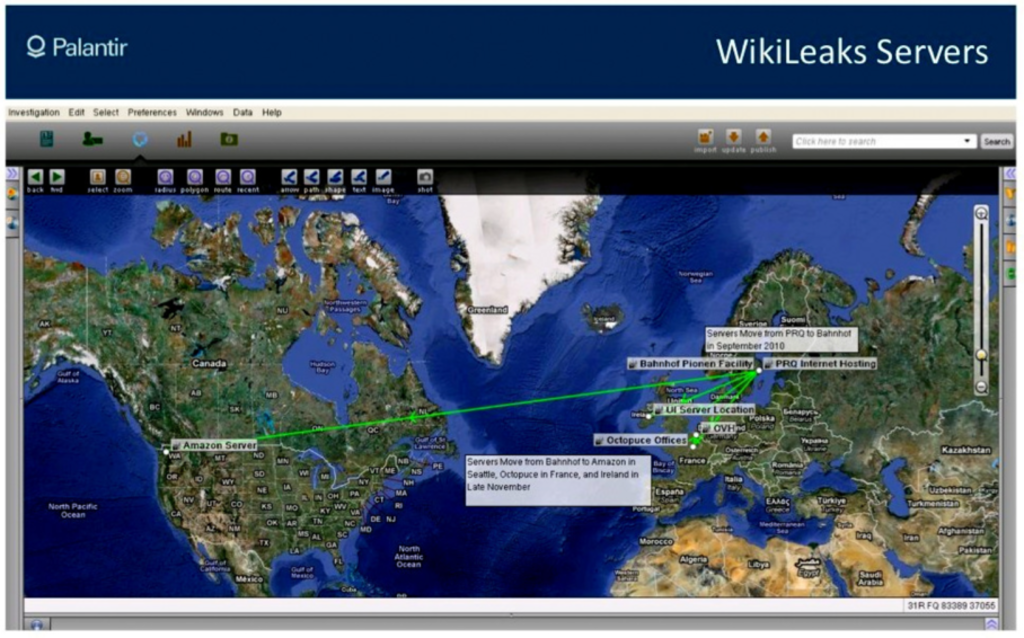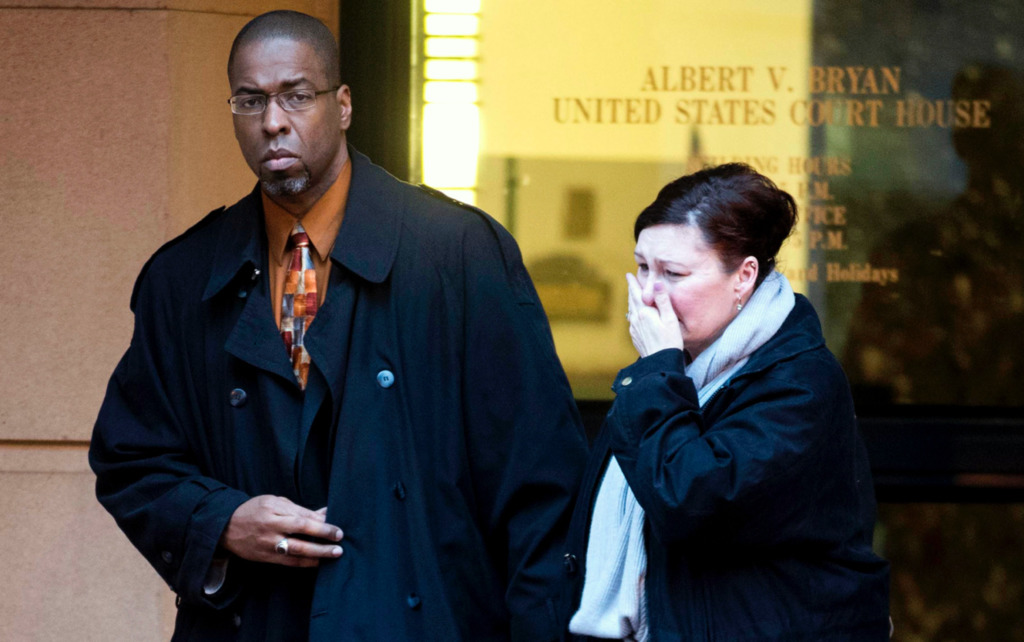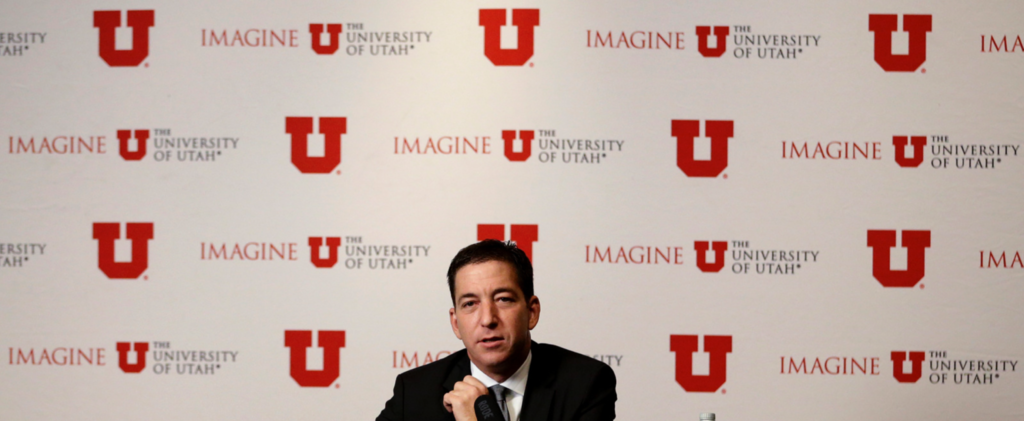
WikiLeaks, the transparency organization known for publishing leaked documents that threaten the powerful, finds itself under pressure like never before, as does its editor-in-chief, Julian Assange. Now the fight to silence WikiLeaks is not only being waged by powerful government figures but also by the media, including outlets and organizations that have styled themselves as working to protect whistleblowers.
As Part I of this investigative series revealed, Pierre Omidyar – eBay billionaire and PayPal’s long-time owner – holds considerable sway over several journalists and organizations that once championed WikiLeaks but now work for the Omidyar-owned publication, The Intercept. Thanks to his deep ties to the U.S. government and his own long-standing efforts to undermine the organization, Omidyar is using his influence to bring renewed pressure to WikiLeaks as it continues to publish sensitive government information. However, Pierre Omidyar is not the only PayPal-linked billionaire with strong government connections and a dislike for WikiLeaks.
Peter Thiel, who once compared writers at Gawker to Al Qaeda after they wrote about his sexuality, is a close confidant of Donald Trump — who, as president, continues to crack down on whistleblowers (even denying them bail) and whose administration has named arresting WikiLeaks editor-in-chief Julian Assange a top priority.
Thiel is a perfect companion for the Trump administration in this regard — having, through his management of a top government technology contractor, overseen the creation of a “pre-crime” algorithm that targets would-be whistleblowers. Not only that, but that very contractor once created a plan challenging “the WikiLeaks threat,” a plan that displays some frightening similarities to current efforts to silence or discredit the organization and its famous editor.
Thiel, after Trump’s inauguration, was nearly appointed chairman of the President’s Intelligence Advisory Board, until Thiel withdrew his name. Several of Thiel’s top aides and associates have been given high-profile positions, including important positions on the National Security Council.
However, Thiel’s strongest relationship to the government comes not from his Trump White House ties, but from his being chairman of the government contractor Palantir Technologies, a company Fortune called “one of Silicon Valley’s biggest, most secretive software startups.”
Palantir began at PayPal as an antifraud algorithm that detected “unusual account activity.” However, following September 11, PayPal co-founder Thiel theorized it could be used to look for “terrorists.” He, along with his long-time associate Alex Karp, decided to name their offshoot company, which was based around the algorithm, after the all-seeing crystal from The Lord of the Rings. It was launched in 2004, two years after PayPal was acquired by eBay’s Pierre Omidyar.
Upon launching, Palantir was largely funded by Thiel himself as well as by In-Q-Tel, the investment arm of the CIA – an agency also connected to Pierre Omidyar. Since its founding, Thiel has long had a hand in how Palantir is run and currently serves as its chairman. As of 2015, PayPal employees still composed 80 percent of Palantir’s management team.
Palantir and its connections

Palantir founder Peter Thiel, center, listens as President-elect Donald Trump speaks during a meeting with tech industry leaders at Trump Tower in New York, Apple CEO Tim Cook is pictured in the background. Dec. 14, 2016. (AP/Evan Vucci)
While Palantir Technologies has many high-profile clients, including some of Wall Street’s largest banks, its most important customer is the U.S. government. Palantir has benefited greatly from government contracts over the last decade, raking in more than $419 million between fiscal year 2007 and fiscal year 2016 from a total of 121 contracts. In recent years, its profits from government work have grown substantially, to over $132 million in government contracts during fiscal year 2016.
The main government agencies that have contracted – and continue to contract – with Palantir are the Department of Homeland Security, the Department of Justice, and the Department of Defense. Its intelligence arm, called Palantir Government, is also used by the CIA, the FBI, the NSA and the Pentagon to “uncover terrorist networks,” fraudsters and “subversives.” Its track record for government work has long been celebrated by key officials in the Trump administration — including former National Security Adviser Michael Flynn, current National Security Adviser H.R. McMaster, and current Secretary of Defense James Mattis.
Though Palantir has largely been hailed in the press for helping track down white-collar criminals like Bernie Madoff and aiding U.S. troops in tracking insurgents in occupied Iraq, it also has another less-publicized use that is of utmost interest to the U.S. government: preventing the leaking of classified information and silencing whistleblowers. By 2012, Palantir had developed a means of indexing information accessed by its software and had created “an audit trail of what the Palantir users were reading, whether they’d handled the information properly and whether they’d modified it in any way.”
Not only that, but – in recent years – Palantir has allowed the Orwellian concept of “pre-crime” to be put into practice. It tracks people the government suspects may commit crimes, including suspected “subversives.” Essentially, Palantir not only enables the government to catch leakers; by recording if classified information was improperly handled and by whom; it also predicts which government employees are most likely to blow the whistle, before it even happens.
The Palantir Plan

A slide from a presentation of the ‘Palantir Plan’, which – at the direction of the U.S. government, hoped to clamp down on Wikileaks.
It’s no surprise that Palantir has developed capabilities that allow it to thwart the leak of government information to organizations like WikiLeaks by tracking – and predicting – the actions of potentially disgruntled government employees, soldiers and contractors. In 2010, the U.S. government was left reeling following WikiLeaks’ publication of the Iraq War logs and other documents allegedly leaked by Chelsea Manning. Already a top government contractor at the time, Palantir, along with two other top technology companies contracted by the government — HBGary Federal and Berico Technologies – was tasked with developing a plan not only to silence WikiLeaks but to destroy it completely.
The resulting plan of attack devised by three firms, titled “The WikiLeaks Threat,” was made public in 2011 after hackers associated with Anonymous targeted HBGary and gained access to scores of emails sent between HBGary, Berico and Palantir. It seeks mainly to take advantage of existing fractures within the community of WikiLeaks and its supporters through an elaborate media disinformation campaign. The leaked correspondence among the three contractors showed that the plan was meant to target WikiLeaks’ “global following and volunteer staff” as well as its donor group.
Read | “The WikiLeaks Threat”
The plan is based largely on what the firms identified as WikiLeaks’ three biggest weaknesses and how those weaknesses could be “capitalized on.” The first weakness mentioned is “financial” and references the financial blockade against WikiLeaks that began in 2010. HBGary’s CEO at the time, Aaron Barr, had also mentioned, in the leaked correspondence relating to the document, that it was important to “get people to understand that if they support the organization we will come after them. Transaction records are easily available.” In other words, Barr asserted that those individuals donating to WikiLeaks should also be targeted.
The next weakness noted regards “security.” Though it doesn’t reference any existing security problem, the document calls for the “need to create doubt about their security and increase awareness that interaction with WikiLeaks will expose you.” The latter was also part of an anti-WikiLeaks strategy laid out in a U.S. Army report.
The final weakness noted in the document targets the “mission” of WikiLeaks. It notes that “there is a fracture among the followers because of a belief that Julien [sic] is going astray from the cause and has selected his own mission of attacking the U.S.” The document later notes that this fracture should be exploited by working to “feed the fuel between the feuding groups” by using “disinformation” and by creating “messages around [WikiLeaks] actions to sabotage or discredit the opposing organization.” A “media campaign to push the radical and reckless nature of WikiLeaks activities” is also cited.
Most interesting of all, perhaps, is the attention the document gives to one individual in particular: journalist and the shining star of The Intercept, Glenn Greenwald. The document notes that Greenwald was critical in moving WikiLeaks’ U.S.-based server to a French one following the release of the Manning leaks, stating specifically that “it is this level of support that needs to be disrupted.” This statement refers more broadly to well-known journalistic professionals with “a liberal bent.” The document further notes that most of these professionals “if pushed will choose professional preservation over cause, such is the mentality of most business professionals.”
The document concludes that “without the support of people like Glenn, WikiLeaks would fold.”
Executing the Plan

Former CIA officer Jeffrey Sterling, left, leaves the Alexandria Federal Courthouse, Jan. 26, 2015, in Alexandria, Va., with his wife, Holly, center, after he was convicted on all nine counts he faced of leaking classified details of a operation to thwart Iran’s nuclear ambitions to a New York Times reporter. (AP/Kevin Wolf)
Though Palantir’s CEO at the time of the document’s release, Alex Karp, apologized for the company’s role in devising a plan to neuter WikiLeaks and spoke haughtily of the organization’s right to free speech, events that have taken place in the years since it’s release suggest this plan was never taken off the table, as Karp seemed to imply, and is currently in effect.
For instance, the plan to exploit WikiLeaks’ “security” weakness mentioned in the document was made manifest through the Obama administration’s persecution (now continued by Trump) of whistleblowers. This crackdown – for the first time – saw legitimate whistleblowers, such as Jeffrey Sterling and John Kiriakou, imprisoned in order to make examples of them. In both of those cases, Sterling and Kiriakou were convicted after allegedly revealing classified information to journalists — James Risen and Matthew Cole, respectively. Risen and Cole are both currently employed by Pierre Omidyar’s The Intercept.
Of course, the longest and harshest prison sentence was reserved for Chelsea Manning, WikiLeaks’ most well-known source, who was originally sentenced to 35 years in prison for the leaks until her sentence was commuted during Obama’s final days as president. Palantir has, as previously mentioned, contributed by helping the government track suspected and potential whistleblowers within the ranks of its employees, increasing the likelihood that anyone who tries to come forward with sensitive or classified information will be exposed and suffer major legal consequences.
There is also evidence that the “financial” weakness of WikiLeaks is again being exploited as the organization finds itself under increased pressure in response to its recent, controversial releases.
As mentioned in Part I of this series, the Freedom of the Press Foundation (FPF) — funded by Omidyar and with many of its directors on The Intercept’s payroll — voted unanimously to stop receiving donations on behalf of WikiLeaks in December, even though it had been set up primarily to help WikiLeaks circumvent the blockade that Omidyar and others oversaw. Even though Omidyar had publicly stated in 2013 that the PayPal blockade was no longer in effect, the FPF had admitted at that time that, despite Omidyar’s statement, the blockade continued. Though the situation between PayPal and WikiLeaks has remained largely unchanged since that year, the FPF’s position on the matter has changed drastically in recent months. Wikileaks has interpreted the FPF’s new position essentially denying the existence of the blockade as proof that the organization has kowtowed to political pressure.
Given what is referenced in the Palantir document and the associated leaked correspondence, there is substantial evidence suggesting that this is the newest iteration of the blockade against WikiLeaks — targeting donations made specifically from within the U.S., which also happens to be WikiLeaks’ largest donor base.
Turning Greenwald: exploiting professional preservation and advancement?

Glenn Greenwald speaks with members of the media, April 7, 2015, in Salt Lake City where he spoke to students at the University of Utah. (AP/Rick Bowmer)
Also of interest is the Palantir document’s seemingly prophetic reference to Glenn Greenwald. Upon joining The Intercept in 2013, Greenwald relegated the rights over the Snowden cache to Omidyar — essentially privatizing them after a billionaire with government connections galore made him a very lucrative offer.
Greenwald has described Omidyar’s offer as “a once-in-a-career dream journalistic opportunity [that] would be impossible for any journalist, let alone me, to decline.” This is a strong indication that Greenwald was presented with the choice of “professional preservation over cause” and, as Palantir predicted, chose to follow the former. It is possible that Omidyar’s influence over the FPF and The Intercept may have persuaded other FPF members with a “liberal bent” to do the same.
Furthermore, while Greenwald still voices support for WikiLeaks and Assange to some degree on Twitter — mainly regarding Assange’s arbitrary detention — he has failed to comment on the FPF vote, of which he was part, as well as the virulent attacks against WikiLeaks leveled by some of his fellow FPF directors and fellow Intercept writers. Though his silence may seem unsurprising to some, given his and the FPF’s connections to Omidyar, it has been suggested that his silence may have struck a nerve with Assange.
In the wake of the 2016 election: exploiting the “mission” weakness
More telling than anything else, however, is why the FPF chose to move forward with this decision. Among those members of the FPF who have spoken up against WikiLeaks in recent months — each of them has pointed to the concern that WikiLeaks and Assange have “gone astray” from WikiLeaks’ original mission, rejecting its commitment to nonpartisanship and intentionally aiding the Trump campaign in the 2016 election — thus making the organization and Assange responsible for Trump’s victory over Hillary Clinton.
Those FPF members that do not share these views have remained silent, despite the fact that many of them have vocally defended WikiLeaks in the past.
This is remarkably in keeping with the Palantir document’s cited “mission” weakness. While the document — written in 2010 — said that some disgruntled WikiLeaks supporters felt that Assange’s alleged target was the United States government, the same “fracture” has arisen with accusations that Assange was unfairly singling out Hillary Clinton. In both cases, Assange and WikiLeaks’ goal was to expose the crimes of both the U.S. government and, later, Hillary Clinton — not to slander either with false information.
Now, those accusing WikiLeaks of everything from Russian collusion to secretly plotting with the Trump campaign are being exploited by a massive “media campaign” built on “disinformation.” Just as the Palantir document suggests, this media campaign is working to “feed the fuel between feuding groups [i.e. those who accuse WikiLeaks of anti-Hillary partisanship and those who do not].”
As will be revealed in Part III of this series, one writer in particular — Kevin Poulsen — has been instrumental in this recent, post-election media campaign to discredit WikiLeaks. Yet, Poulsen’s history shows he is no friend to whistleblowers or WikiLeaks. Not only was Poulsen responsible for causing massive damage to the reputation and defense of Chelsea Manning prior to her trial, he also shares a direct connection to the FPF — and a shady connection to the U.S. government. More troubling still, he — after two mysterious suicides — is the only surviving member of the group that created SecureDrop, the app which — after being promoted by the FPF and The Intercept — is now widely used by top media outlets for “secret” communication between would-be whistleblowers and big-name journalists. Could Poulsen’s troubled past with WikiLeaks and its sources endanger SecureDrop’s goal of protecting whistleblowers?
Top Photo | Peter Thiel looks over the podium before the start of the second day session of the Republican National Convention in Cleveland, July 19, 2016. (AP/Carolyn Kaster)
Whitney Webb is a staff writer for MintPress News. She has written for several news organizations in both English and Spanish; her stories have been featured on ZeroHedge, the Anti-Media, and 21st Century Wire among others. She currently resides in Southern Chile.
Stories published in our Daily Digests section are chosen based on the interest of our readers. They are republished from a number of sources, and are not produced by MintPress News. The views expressed in these articles are the author’s own and do not necessarily reflect MintPress News editorial policy.
